














































































Editor-in-Chief
EstelLa Ren
Managing Editor
Madeleine McColL
Deputy Editor
Miles Bolton
CoOrdinating Editors
Catrina Tang
Adshayah SathiaseElan
Art Director



Katherine Guo
Features Editor
Sonia Persaud
Opinions Editor
HanNah Alper
News
JesSica Kim
Veronica MacLean
Sophia Schiefler
Om Shanbhag
Andy Yang
Culture
Ela Kang
DanielLe Paul
Paniz Vedavarz
Sports
Ryan GoOdison
Manan Joshi
Varun RedDy
Social Media
Pe’er Krut
Chiara WalLace
Graphics & Layout





JesSica Counti
Katherine Guo
Arisia QarRi
Photo




Sophie BouquilLon
Kai Wilson
Video
Mina Ahmad
Shylaja Kumarasingham
Arieh Leving
Leah MarshalL
Madeleine McColL
Copy / Digital
Alex D’Entremont-Smith


ScotT Yun Ho
Editorial SupPort
Dan Brown

frosh! You are on the first leg of your journey through the Western “Uni-Verse.”
If you picked up a copy of our annual Frosh Issue while waiting in line for your first Spoke bagel, wondering what’s happening on campus — you are on the right track.
We are the Western Gazette, our university’s official student newspaper since 1906. The copy you hold in your hands was written by a group of students from all different years of study and a variety of faculties — yes; even the Science faculty.
One thing our editors have in common is that we were all frosh once upon a time. We put together this magazine — jam-packed with stories, tips and profiles — to help you navigate your time here. This is everything we would have wanted to know during our first week at university — at least, it’s what could fit in this bundle of pages.
During Orientation Week, you’ll forge friendships that last anywhere between a week and a lifetime, you’ll watch your first Mustangs football game, you’ll move in alongside strangers who are just as stressed as you are about university life and you’ll get woken up by the fire alarm if you’re unlucky. OWeek is exciting but not everyone’s cup of tea. As you will learn in this issue, it’s okay to hate OWeek. But don’t knock it until you try it.
For international students, it’s never easy to adjust to the new environment and culture. Whether it’s making new friends or adapting to a new way of teaching — it will take time, so go easy on yourself. You are stronger than you think.
When the frenzy of OWeek fades, your university experience will be just beginning.
Last year, the Gazette was on the frontlines, reporting on campus affairs ranging from faculty strike negotiations and the experience of disabled students at Western University, to limited prayer spaces for Muslim students and London’s buzzing café scene.
Although I don’t know what the future holds, there is always something new happening. If it affects you, it affects the Gazette.
As your student newspaper, there’s nothing more important than representing your voice. Share a news tip, write us a Letter to the Editor or comment on our social media. We take your opinion seriously and we want to hear from you.
Above all, if journalism piques your interest, the Gazette is always more than happy to teach the basics. We welcome any students who want to learn transferable skills like writing, editing, social media, photography, videography and graphic design. Don’t have any experience? Our entire masthead learned from scratch, and we’d love to pay it forward.
We are proud of our alumni, many of whom are now at some of the most important news outlets in the world, such as CBC, the Globe and Mail, the New York Times, and the Wall Street Journal
On a heavier note, the Gazette is facing new challenges this year. The Online News Act, Bill C-18, requires tech companies to compensate news outlets for the content shared on their platforms.
In response, tech giants like Meta — the parent company of Instagram and Facebook — and Google are threatening to prevent users from reading Canadian news. Meta has already started blocking news.
This is affecting the Gazette, but we are not going anywhere.
Though we may disappear from your social media feeds, the Gazette will continue delivering independent and reliable daily news content.
Going forward, the Gazette’s print products will be on stands every two weeks. We publish daily news and everything you need to know on our website at westerngazette.ca. You can also sign up for our newsletter to stay informed of the latest news on campus.
See you later, Mustangs. You’re going to have a great start at Western. I am sure this will be the first of many issues you read from us.
— Estella Ren, Editor in Chief



Ifyou’re reading this, let me be one of the first but definitely not the last person to welcome you to Western University! I am so excited to share the incoming year with you and the rest of our big purple family.
The next couple of weeks are probably going to feel like a whirlwind of new routines, new friends and definitely a few new stresses. You’ll quickly find yourself with a brand new sense of normal, and although this transition feels incredibly difficult, it’s also incredibly exciting.
If there’s one thing I wish someone told me in my first year, it is that the next four years are going to go fast — like, really fast. So if I can lend you some advice, remember to enjoy the small moments: your first time trying a Spoke bagel, the feeling of walking into your first exam and the excitement of going to a football game with some friends. Enjoy all of it because one day you’ll wake up and realize that some of the best years of your life happened during your time at Western.
I’m going to be honest — it’s going to be difficult. There will be classes that take you outside of your comfort zone and there will be moments when you have to work a little bit harder than you’re used to. You’ll have to think of




new ways to grow and new habits to adjust to.

Eventually, you’ll learn to thrive, and until then, we’re here to support you. The University Students’ Council is your student government, and we believe students have the power to change the world. We do everything we can to work with the university to provide you with the best student experience possible.



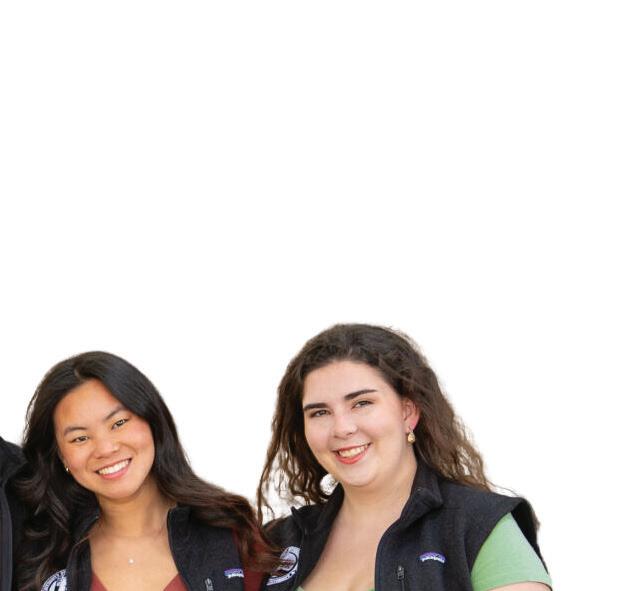
You’ll likely see a lot of us throughout the year, but what you might not see is the amazing work that my team does to make your lives easier. Providing you with mental health support, peer support, food support, your health and dental plan and your bus pass? Yep, that’s us. And the amazing Orientation Week that you are experiencing? We do programming like that all year round.
The real bread and butter of the USC is our advocacy. We actively stand as the voice of students, making your concerns our concerns and our concerns your solutions.
There is no doubt in my mind that we have a place for you here at the USC. Join a club, run for your faculty council, volunteer for us or you can be like me and do it all. I promise that the time you spend giving back to your campus community will come back to you. That’s how I got to be president — now just imagine what you can do.
I really do hope we run into each other on campus, so if you happen to see me around, come say “Hi” or “Hey” or even “Hello.”
Welcome home, Mustangs — the best is yet to come.
Thereach of Canadian news outlets on the internet — including the Gazette — is dwindling.
Tech giants Google and Meta have announced their decision to block Canadian news content from their platforms in response to Canada’s Bill C-18, otherwise known as the Online News Act. The law passed through the Senate on June 22 and mandates tech giants to compensate news outlets for the content shared on their platform.
This move will impact not only the likes of the Globe and Mail or the Toronto Star, but also small independent media and student newspapers such as the Gazette.
Lisa Macklem, a PhD candidate in the Faculty of Law at Western Univer-
sity with a focus on the entertainment industry and digital content delivery, explained Bill C-18 is also commonly referred to as a “link tax” where anyone linking to news sites will pay a fee that will go towards Canadian media outlets.

Though the Act is intended to “support news businesses to secure fair compensation,” as stated on the federal government’s explanatory webpage, Meta and Google have continually argued the only feasible option for their respective business models is to cut Canadian news from their platforms entirely.
“The Online News Act is based on a fundamentally flawed premise,” said Nick Clegg, Meta’s president of global
Arisia Qarri GAZETTEaffairs in a statement on May 8.
“Meta does not benefit unfairly from people sharing links to news content on our platform,” he said, pointing to the service Meta provides to publishers — including driving traffic to news outlets’ websites — and the platform’s main purpose not being news.
Immediately following the Act becoming law in June, Meta tested blocking news on five per cent of Canadian users on Facebook and Instagram.
In response, the federal government and Quebec government said they would suspend all advertising on the two platforms, though Liberal Party advertisements are still active.
On Aug. 1, Meta announced they
“have begun the process of ending news availability in Canada,” and would implement the changes over the coming weeks. This means individual users in Canada will no longer have the ability to view, post or repost news content.
When blocked users attempt to view news outlets’ profiles on Instagram or Facebook, they are met with a message that reads, “people in Canada can’t see this content” and cannot view previously published content.

Former federal heritage minister Pablo Rodriguez said Meta’s new social media platform Threads “could be” regulated under the Act as well, but the situation would be more certain after going into the regulatory process.
On June 29, Google released a statement saying links to Canadian news will be removed from its Search, News and Discover products when the law comes into effect by the end of year. Google recommends Canadians navigate directly to their preferred news outlets’ websites.
Dr. Anabel Quan-Haase, associate dean of the Faculty of Information and Media Studies told the Gazette the ramifications of the Bill will be significant.
“Our understanding of the world will be really narrowed down by us being exposed to more mis- and disinformation because a lot of the trustworthy news will be oppressed,” Quan-Haase said.
If students utilize a Google search for their next paper or research project, the search will not return news originating from Canada and they “will no longer be able to get the full spectrum of the stories and the information that we need,” Quan-Haase explained.
She emphasized that users must be aware of the algorithms these tech giants use, as well as the type and origin of content they are consuming.
Macklem and Quan-Haase both pointed to the Bill resulting in a lack of access to Canada-specific news — a particular threat to students.
“If you can’t find a Canadian answer, you may get an American answer; [one from the] UK, Australia, India [or] China,” Macklem said in reference to students’ research for their classes.
Despite recent moves by Meta and Google, newsrooms across Canada have promised to keep reporting and updating news on their websites, apps and newsletters.
The Gazette will continue its consistent independent and reliable news coverage of issues that matter to Western students. The Gazette will remain accessible through a direct visit to westerngazette.ca. Signing up for the paper’s newsletter to have stories delivered directly to your email inbox, following the Gazette on TikTok @westerngazette or picking up a copy of the Gazette’s bi-weekly print editions on campus are a few other ways to stay connected.

University life can be confusing, but the right people and resources can help you navigate it. Follow this guide to some of Western University’s key figures and the people who can support you through your first year.

sophs live off-campus, but if you need someone to talk to, they’re ready to help. They also run residence orientation activities.
First-year students are also assigned a faculty soph to guide them through OWeek and introduce them to the academic world of Western. Faculty sophs are upper-year students from a student’s home faculty who are available to answer questions and direct you to the right resources. Confused about assignments, lost on campus or wondering where your mandatory Monday night lecture is? They’ve been there before and can help you out.
Struggling with selecting your courses or unsure if your current program is the best fit for you?

Dons live on each floor of first-year residence buildings and are available to offer support and advice to students. They also lead floor meetings and building activities. Think of them as your university parents as they are also responsible for responding to emergency situations and monitoring violations of community standards and university policy.
A residence soph is an upper-year student assigned to a residence floor who acts as a mentor to incoming students and a guide to Western University’s school spirit. If residence dons are your parents, residence sophs are your older siblings. Throughout Orientation Week and beyond, you can rely on your residence sophs for general first-year advice. Residence
Every faculty at Western has a team of academic advisors. They’re here to answer any questions you have about your program. Depending on your faculty, you can speak with them via live chat, email or an in-person appointment. Visit the Office of the Registrar’s website to find the best way to contact your advisor.
Alan Shepard is Western’s 11th pres-ident and vice-chancellor. He was re-appointed to his second term in December 2022 and will be in the role until June 2029. Shepard is responsible for supervising the operations of the university, leading it through academia,
research and development opportunities, as well as representing Western as its chief spokesperson. He also makes recommendations to Western’s overall governance body — the Board of Governors — on different topics.
The University Students’ Council is Western’s student government, run by students, for students. It advocates to the university’s administration and the government about issues like the cost of living, academic policies and more. The council’s executive team is composed of six members, including one president and five vice-presidents. The current USC president is Sunday Ajak and the USC presidential election is held each spring.
The student union collects over $1,000 in ancillary fees per full-time student every year and these funds support OWeek, the PurpleCare Health Plan, student support and programming and the clubs program. The USC also runs The Spoke, the famous on-campus bagel spot, and The Wave, a restaurant — both located in the University Community Centre.
Western’s Office of the Ombudsperson is a valuable resource for students who need assistance in managing and resolving university-related conflicts. These can include academic offences, unfair grading and violations of Western’s Code of Conduct or Gender-Based and Sexual Violence Policy. The Office of the Ombudsperson does
not advocate on behalf of students or Western but is an impartial, independent party that acts as a listening ear and connects students with the appropriate resources. You can book an appointment with an ombudsperson through the office’s website.



The transition between living at home to living on your own can be hard on your physical health — just wait for the infamous ‘frosh flu’ to spread across campus. Luckily, Health and Wellness is Western’s on-campus appointment-based medical clinic that provides students with a variety of physical health and mental health services.
The physical health services include medical care, counselling and psychiatry, sexual and reproductive health services, allergy injections, flu shots and more. If you need mental health support, Health and Wellness can provide you with confidential counselling, workshops and psychotherapy. The clinic has counsellors experienced in serving 2SLGBTQIA+ students. Racialized students can request to speak with counsellors who are persons of these communities with lived experience.
All health services are located at Thames Hall. Health appointments can be made by calling 519-661-3030 during clinic hours Monday through Friday. Same-day crisis appointments can be made on weekdays before 4:30 p.m..
Accessible Education helps to ensure that Western’s programs are accessible for all students, and provides support to students with disabilities. Accessible Education offers academic accommodation for courses, exams and internships, access to computer labs with assistive technology and alternate formats of course texts like braille and electronic texts. Learning strategy instruction is also available for students with learning disabilities and attention disorders. You can make appointments with Accessible Education by emailing aew@uwo.ca.
The International & Exchange Student Centre is the home away from home for international students at Western. It provides students with services including the peer guide program, the English conversation program and various events. Students can also discuss immigration, academics and financial concerns by making an appointment on their website. The IESC also offers quick, drop-in appointments between 1 to 4 p.m. Monday to Friday.
Per cent of As and Bs
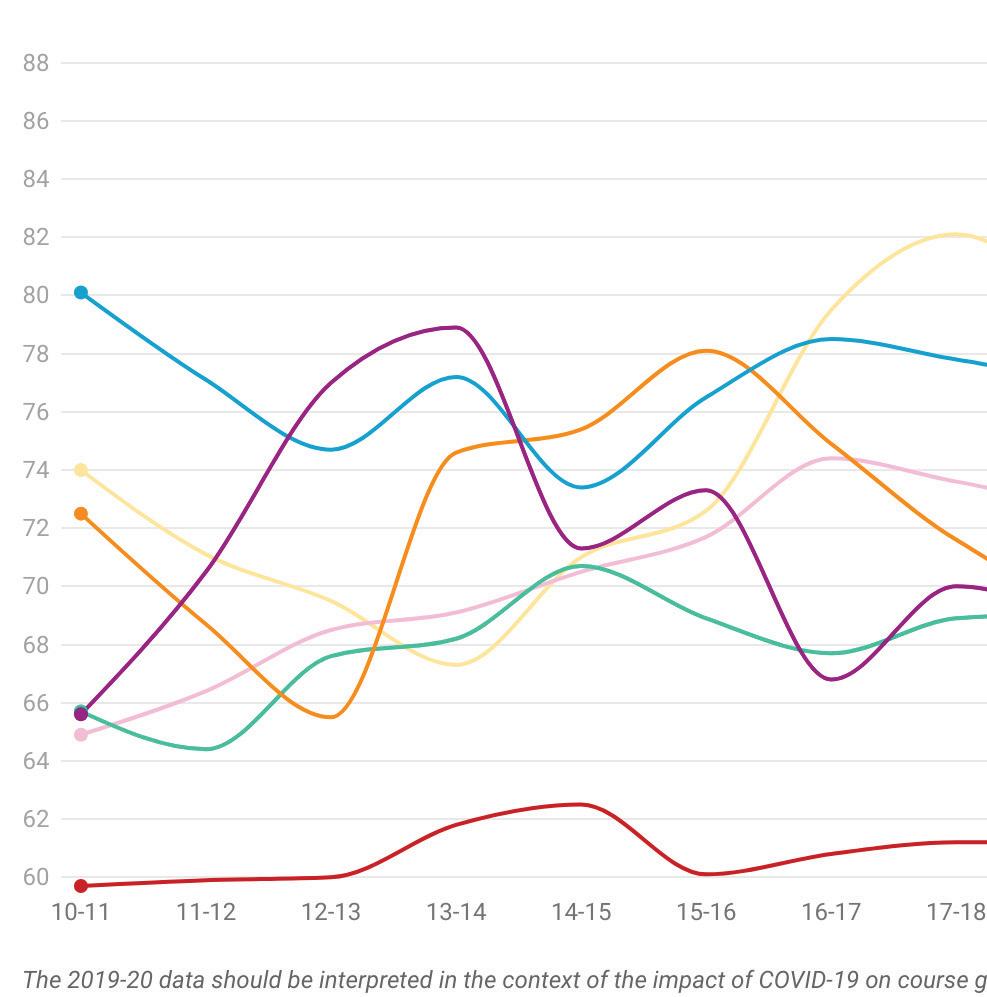 By Cat Tang
By Cat Tang
Carly Smith finished high school with a 96 per cent average. Then she got a 52 on her first university midterm.
Smith, a recent neuroscience graduate who is entering a master’s program in global health systems this fall, admits she struggled to transition to university academics in her first year.
“That was the lowest grade I’ve ever gotten in my life,” says Smith. “In high school, I never got below an 80.”
In the 2019-20 school year, the year

Smith entered Western University, every incoming full-time first-year student on main campus had a high school average above 70 per cent — what Western considers to be a B letter grade for undergraduate students. The university’s grading scale considers 80 and 89 per cent of grades as As and 90 and 100 per cent a A+s.
As and Bs were only 73.2 per cent of grades distributed that year in Smith’s first-year medical sciences program.
“It’s really hard to go from being at the very top of your high school to just
being average,” says Smith. “It definitely is a bit hard to swallow at first, but you have to recognize that you’re just surrounded by so many talented people and not to let that bring you down — it can actually bring you up.”
Western is known for accepting students with top high school averages. Maclean’s reported that in the fall of 2021, 26.6 per cent of Western’s full-time first-year students had high school averages of 95 or higher and 48 per cent had averages of 90 to 94.9.
One policy that differs between Western and high schools is that setting and maintaining grading policies fall into individual departments at the university. Some departments require professors to grade classes’ averages within a certain range. This can lead to bell curving in some classes, where a class’s grade can be shifted up or down in order to meet the department’s predetermined average for that class.


Like Smith, Emily Ying — who was also a medical sciences student and is entering a master’s program in microbiology and immunology this fall — was shocked by her grade on her first university midterm.
She had a 95 per cent average in high school and received a low 70 on her first midterm — an experience
that she can recall vividly even four years later.
“It’s one of the most memorable tests I’ve ever taken because of the shock,” says Ying, adding that she immediately cried and called home upon receiving her mark. “I was very, very disappointed in myself — it was really upsetting.”
After talking to some classmates who had done well on the exam, Ying realized where she went wrong: she had assumed that the textbook was just supplementary information — like it was in her high school — and skimmed over it, when it was actually information crucial to the exam.
“It wasn’t that I just couldn’t get [that] information in my head, I was just missing this part of study materials,” says Ying, who improved on
her second midterm and ended up finishing her first year with a 92 per cent average. “My confidence came back after that.”
Ying recommends reflecting on what went wrong after a bad test, and reaching out to a professor or teaching assistant for feedback. Students can also access resources and support through the Learning Development and Success team at Western.

After bombing her first midterm, Smith was also motivated to improve her study strategies — she even started going to additional lectures for another section. She ended up finishing the class with a 70 per cent.
“That was my proudest grade, even though it was my lowest grade,” says Smith. “It was the one that I worked the hardest for.”
Afterkicking off the school year with Orientation Week and street parties, you might find yourself looking to venture outside of the Western University bubble — look no further than the city of London for a local escape.
London offers a variety of experiences to enjoy with friends, explore on dates or just go solo.
A classic London experience is the Western Fair, the largest community event in the city. The fair features rides, concerts and attractions from Sept. 8 to 17 in the Western Fair District. Admission costs $12 if purchased before Sept. 8 and $15 at the gate. The Western Fair District is serviced by London Transit Commission bus route 2, which stops at the Natural Sciences Centre.
Downtown London hosts Dundas Place, a regular street turned into a vibrant plaza, with events led by the City of London. Street Salsa Fridays promise a cute date night or a chance to learn a unique dance style from 7:30 to 10:15 p.m. every Friday. If salsa music doesn’t sound like your jam, you can listen to local musicians during Saturday Night London Arts
Live from 4 to 9 p.m.. Both these events run until Sept. 15 and LTC route 6, 13, 106 and 90 all service downtown and Dundas Place.
Feeling more green? Do it for Her is a charitable botanical garden and expo raising money for the Cancer Care and London Abused Women’s Centre at the London Health Sciences Foundation. The event will take place on Sept. 9 at the London Civic Garden Complex, accessible to Western students by route 10 from Natural Sciences and a short walk. Entry is by donation.
The downtown core of London is home to Victoria Park, a public park and event space hosting the Lucky Lion Night Market for the first time from Sept. 15 to 17. With a bar, DJ and lots of food items, it might just be the perfect event for Western students.
If a night market isn’t your style, Oa(sis) — a women-led cultural organization — offers Skate And Bounce at Victoria Park every Tuesday in September from 6 to 8 p.m., promising funky beats as you skate. Rentals are available for $10, but you can also bring your own roller skates.
If you’re feeling creative, For the Love of Art hosts art classes for adult beginners at its Westmount Shopping Centre location. On Sept. 20, you can learn how to sketch lighthouse scenery with step-by-step instruction and supplies provided for $25. The 6 to 7:30 p.m. class has a maximum capacity of 15 people, so book early! Westmount Shopping Centre can be reached by route 10 from Natural Sciences.

If events on this plane of reality don’t seem all that interesting, the London Psychic & Crystal Fair may be your thing. Southern Ontario’s mediums, psychics, astrologists, palmists and tea leaf readers will all be gathering at Centennial Hall on the weekend of Sept. 22 to 24. Admission is $10 for the whole weekend and routes 6, 13, 90 and 106 will take you within walking distance of the hall.

your name? What’s your program? Where are you from?”
Sound familiar? These are the three questions you’re likely asking and answering to what feels like thousands of people throughout the infamous Orientation Week. This is your reminder that if you find yourself feeling overwhelmed by the constant activities, a lack of sleep or the trials and tribulations of meeting new people, you are not alone.
While Western University’s OWeek is designed to create lasting bonds amongst new first-year students, it might not exactly be everyone’s idea of fun.
A week best suited for the extrovert can often isolate the introvert, leaving them increasingly stressed and lonely in an already unfamiliar environment.
Not too long ago, when I was choosing between universities at the end of grade 12, I remember being swayed by Western’s extravagant OWeek, with past headliners like Lil Uzi Vert, Juice WRLD and Loud Luxury.
Arriving at Western as an out-ofprovince student, I heavily relied on OWeek activities to build my social circle. Unfortunately, I quickly realized that the instant friendships I made via Snapchat adds and Instagram follows didn’t necessarily translate into everlasting relationships.
Although I had always considered myself outgoing prior to university, the pressures of fitting in during OWeek left me feeling socially anxious. In particular, I remember feeling very overwhelmed during last year’s Loud Luxury concert, with approximately 4,000 first-years screaming, jumping and moshing.
Like I said, not exactly everyone’s idea of fun.
Furthermore, as someone who does not necessarily identify with university drinking culture, I found myself secluded from the majority of the crowd, triggering an extreme sense of FOMO — a fear of missing out. At a university like Western, known for its dominant party scene, I struggled to make meaningful connections with others through alternate social activities.
Flash forward a few weeks into the first semester, the true impact of OWeek became apparent to me. The truth is that OWeek sets up unrealistic expectations for incoming students, setting them up for social and academic failure.
Rather than preparing first-years for academic prosperity, OWeek normalizes partying and late nights, making it difficult to adjust to a learning mindset.
Moreover, by portraying university as an exciting adventure, OWeek
overlooks many challenges that students will face, such as academic hardships, financial stress and poor mental health.
Ignoring these challenges leaves students unprepared for when they inevitably encounter them later on in university.
Western should strive to create more balanced orientation programs, emphasizing academic preparation, personal development and well-being.
With a more realistic portrayal of university life, students will be better equipped to navigate their academic journey, setting them up for longterm success.
For the first-year students that might be feeling excited, anxious or overwhelmed from the chaos of OWeek, remember that OWeek does not reflect the rest of your first year and certainly not the rest of your university experience.
There are so many other opportunities to make friends at university outside the one week that happens to be filled with flashy bright activities, including classes and the many clubs available on campus.
Just because OWeek’s not your thing doesn’t mean university isn’t. Trust me, it only gets better from here.
“What’s




You will experience multiple versions of yourself throughout your university career. Whether it be the friends you find, the classes you take or the mistakes you make along the way your time here at Western will impact your identity.
According to the summer blockbuster Spiderman: Across the Spider-Verse, these unstoppable moments that shape us are called “canon events.”
Canon events can be amazing, heartbreaking or downright embarrassing, but they are unavoidable moments that change us forever.
As a welcoming gift to the Western “Uni-Verse”, the Gazette masthead has compiled a list of canon events that bind together the lives of Western students and make us all Mustangs.




























































We can’t interfere, but here are some canon events you may experience at Western:
DEMOLISHING A KING RICHIE’S PIZZA AT 2 A.M.

ACCIDENTALLY HITTING “REPLY ALL” WHEN RESPONDING TO A PROFESSOR’S EMAIL


USING “WHAT PROGRAM ARE YOU IN?” AS YOUR GO-TO ICEBREAKER AT EVERY PARTY





HAVING OWL CRASH RIGHT BEFORE SUBMITTING YOUR ASSIGNMENT AT 11:55 P.M.


WALKING TOO CLOSE TO THE CANADIAN GEESE AND FEARING FOR YOUR LIFE


TAKING YOUR FIRST BITE OUT OF A SPOKE BAGEL AND EXPERIENCING NIRVANA



OUR












GOOGLING “WHAT JOBS CAN I GET WITH MY *INSERT PROGRAM HERE* DEGREE?”







SPEED WALKING TO YOUR GO-TO CAMPUS TOILET AFTER CHUGGING YOUR MORNING COFFEE
ALMOST FALLING OVER ON A LONDON TRANSIT COMMISSION BUS WHEN THEY HIT A CURB
USING THE GAZETTE AS YOUR GO-TO NEWS SOURCE
OUR













DESPERATELY SEARCHING FOR YOUR CLASS AFTER GETTING LOST ON CAMPUS AGAIN … AND AGAIN … AND AGAIN
BREAKING THE BANK TO BUY YOUR FIRST PIECE OF WESTERN MERCH FOR HOMECOMING



YOUR FRIENDS ON





































GOING HOUSE-HUNTING WITH BROUGHDALE AVENUE



CHECKING OUT THE STARBUCKS IN THE UNIVERSITY COMMUNITY



CENTRE AND TURNING RIGHT BACK AROUND BECAUSE THE LINE IS TOO LONG

DECLARING YOUR IVEY AEO STATUS A LITTLE TOO CONFIDENTLY












































DOING ALL OF THE WORK IN A GROUP PROJECT
STARTING BEEF WITH YOUR HIGH SCHOOL FRIENDS WHO GO TO QUEEN’S UNIVERSITY
REGISTERING FOR A “BIRD COURSE” TO TRY AND RAISE YOUR AVERAGE (AND BOMBING THE FIRST EXAM) VERAGE











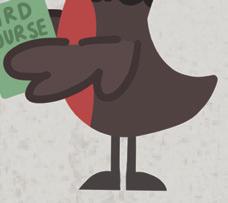

JOINING A CLASS GROUP CHAT (AND TURNING OFF THE NOTIFICATIONS A WEEK LATER)



















TAKING PHOTOS OF LECTURE SLIDES BECAUSE YOU WILL “WRITE THEM DOWN LATER”

SPOILER: YOU WON’T
GETTING WINDED WALKING UP UNIVERSITY COLLEGE HILL ON YOUR WAY TO CLASS
Asa generally unhappy London local, it does not surprise me that the Forest City ranked dead last on Point2’s report of Canada’s 100 happiest cities.
Point2, a real estate company, took the 100 largest cities in Canada and built their own happiness index based on 30 happiness-related metrics like poverty rates, perceived health and median after-tax income.

As a naturally skeptical person, I was initially apprehensive to trust the
results of the list, brushing it off as arbitrary. However, I have admittedly let my cynicism get the better of me — London can be pretty depressing sometimes.
One major factor in London’s seeming unhappiness is the persistently -high cost of living.
According to Point2, the median household income after taxes in London currently stands at $68,500, while the average home in London in July costs about 10 times that at a price of
$668,821 — reflecting an increase of 36 per cent over the last three years.
Although London is not unique in this issue, it still remains an unsettling fact — especially for those who are entering the workforce. New graduates in London are probably going to be renting for a long time before saving enough to purchase a home.
Not only are houses incredibly expensive, but asking rents in London have also increased by 0.8 per cent from June to July according to
Rental.ca’s report, with a one-bedroom costing approximately $1,755 per month. This would cost $21,060 per year — almost one-third of the median household income after taxes.
One could justifiably argue that inflation and the high cost of living affect the entire country, but it is only one of London’s many issues.
I always say London was a city built for cars, albeit poorly.
The municipal government simply does not invest enough in public means of transportation. The London Transit Commission is notorious for being unreliable — this makes residents’ lives more difficult when trying to travel to work or school, and is definitely a contributing factor to my personal dissatisfaction with the city.

However, I do not expect to buy a
car anytime soon with the average price of a used car in Canada being $34,330. For reference, this is about half of the median household income after taxes in London.
London is also not a great place for sightseeing besides the constant downtown construction and the potholes so deep that driving over them will literally tear the bumper off your car.
And perhaps the most egregious offence of all: there is not a single Applebee’s location in the entire city. This means that the closest I can get to fine dining is in Windsor, where there is not just one, but two Applebee’s.
But while I do not consider London a particularly happy city, I do not think it is a complete lost cause. Although I just detailed some of
the less-appealing aspects of London, I will admit the city has some fun events. One of which is Sunfest — a summer festival of food, music and art to celebrate the city’s multiculturalism.
London has also seen a growing number of markets where you can support local artisans and small businesses who sell everything from enamel pins to baked goods.
If you’re a first-year student coming to London for the first time, give it a chance. It may not be as flashy or exciting as Toronto or Vancouver, but soon enough, you’ll feel at home.
In time, I am optimistic that things will change for the better in the Forest City.
Until then, you can find me at one of Applebee’s Windsor locations.
is home to a number of varsity sports teams, including the Mustangs’ hockey, football and basketball teams playing on campus. If you’re a sports fan or want to get involved in intramurals, there’s lots going on.
Equipped with the knowledge of Canadian university sports from this in-depth guide, you could become the next Mustangs superfan or the next intramural flag football all-star.

Ontario University Athletics manages most competitive, large-scale sports across Ontario, including football, hockey, basketball and volleyball. Western University usually plays against other teams within Ontario in regular season competitions.

The Mustangs football team is the two-time reigning OUA champion, having won the Yates Cup in 2021 and 2022 and hold 34 conference championships in total, the most in Ontario.
Last season, the Mustangs men’s squash team and the women’s rowing team dominated OUA, taking home their 39th and ninth consecutive championships, respectively.
The OUA website is the one-stop shop for everything you need to know within the conference. OUA also offers an on-demand and live streaming service of most of their top-level competitions for free at OUA.tv. Whether the Mustangs are on the road or if
you’re unable to get to every game live, you won’t miss a beat.
U Sports is the national governing body for university sports in Canada, essentially the cornerstone for organizing varsity teams around Canada.
Unlike OUA competitions, these competitions are played against teams across the country. The U Sports website has a plethora of statistics on potential national championship opponents.
Last November, the Mustangs hosted the Vanier Cup — the Canadian university football national championship — which brought in $2.4 million in economic growth for London, Ont.. This year, the Vanier Cup will be hosted by Queen’s University at Richardson Memorial Stadium in Kingston, Ont..
The Mustangs won the Vanier Cup in 2017 and 2021. They’ve also played in the U Sports semi-final in 2018 and 2022.
In 2022-23, Western’s women’s swimming team placed fifth in the country, winning three medals at the U Sports championships.
As the representatives of Canada, U Sports also provides opportunities like volunteering at the World University Games or becoming a program administrator to help spread university sports internationally.
Every Mustangs game on campus is free for students to attend with a valid student card. The Mustangs also post live stats on their website and scores on their social media pages.
Radio Western, our on-campus radio station, broadcasts select Mustangs games. Here at the Gazette, sports reporters provide in-depth coverage of the Mustangs teams and update you on the latest sports news in the weekly newsletter.
If you’re not ready to call it quits on your illustrious high school basketball career and want to play for fun, the Mustangs offer intramural sports for all students, including flag football and inner-tube water polo. Intramurals have competitive and relaxed divisions depending on your commitment level.
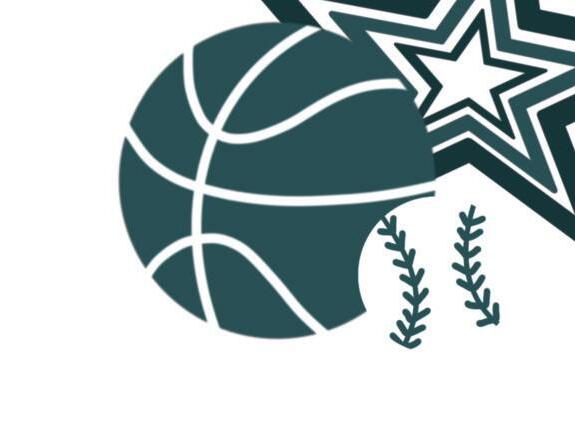
And if you want to maintain a healthy lifestyle but don’t want to play a sport, the Western Student Recreation Centre is the on-campus gym accessible to all students.
No matter if you love watching live, competitive sports or playing against your friends for fun, there is something for you to enjoy on campus.
ManyCanadian university football players dream of one day playing in the National Football League. For former Mustangs fullback Tim Tindale, this became a reality.
In a 1994 preseason game against the Washington Redskins, Tim donned his Buffalo Bills uniform for the very first time and played in front of a crowd upwards of 75,000 people.
“[I remember] being in a sort of awe, but I don’t remember many details about the game,” Tim says.
Tim’s journey to the NFL didn’t begin on the field, but rather on the ice. In high school, hockey was Tim’s priority and he was keen on getting himself a scholarship to play in postsecondary.
But Tim found himself getting sick of hockey after playing it for so many years. He made use of his athletic talents and focused on football — so the London native stayed home to play for the purple and white at Western University.
Tim began his career for the Mustangs in 1990 — and in what is typical of Western’s football program — he did not start galloping right away.
The fullback played as a tailback in his first year and started only six of the team’s nine games. Fullback Duane Forde had control of the reins at the time and Tim would have to wait before getting the starting position.
In the meantime, he learned the ins
and outs of Mustang football.
“[Duane] taught me a ton in that one year. I was really grateful for that,” Tim says. “I can’t give enough credit to Duane for being a mentor and someone to look up to and follow the way they handle themselves both on the field and off.”
After a summer of training and Duane leaving the team for the Canadian Football League, Tim got his shot in the 1991 season — he did not disappoint.
In the first game of the season against the York University Lions, Tim led the Mustangs to a dominating 52–28 victory, earning 255 yards and four touchdowns — the beginning of a truly remarkable season.
In a week-three matchup against the McMaster University Marauders on Sept. 28, 1991, Tim scored one touchdown and ran for 211 yards
which put him first in the Ontario Universities Athletic Association — known now as Ontario University Athletics — season rushing totals.
The second-year fullback did not give up first place for the entire season and went on to break the single-season rushing record in both the OUAA and the Canadian Interuniversity Athletic Union — known now as U Sports — with 1,208 yards through seven regular season games in 1991. Tim also scored an Ontario-record and Canadian-leading 17 touchdowns on the season.
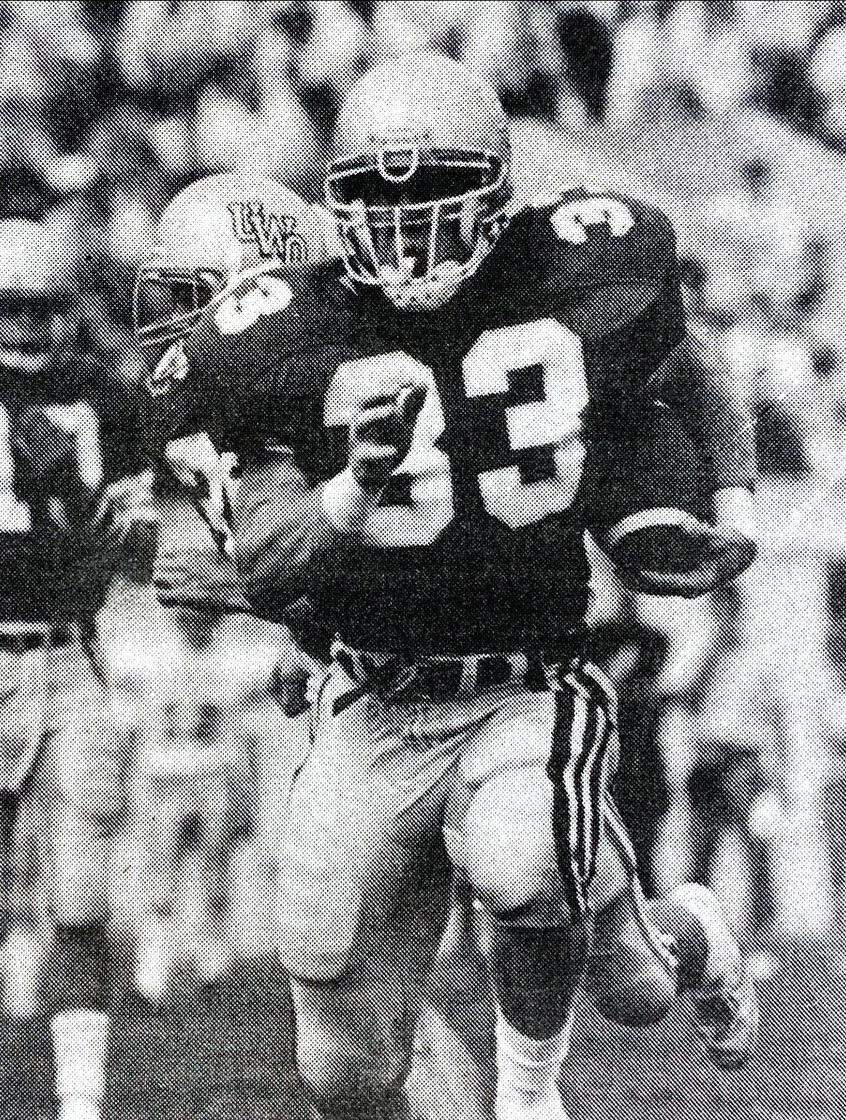
“I made sure I worked 10 times as hard as anybody else,” Tim recalls. “ I think that’s one of the biggest reasons that I had success at Western.”
For Tim’s prowess on the field, the CIAU awarded him the Hec Crighton Trophy — the most outstanding Canadian university football player of the season.
But the Mustangs’ 1991 season didn’t end the way many would’ve hoped. In a Yates Cup matchup against the Wilfrid Laurier University Golden Hawks, they fell short in a 13–12 defeat. The Golden Hawks went on to win the Vanier Cup over the Mount Allison University Mounties.
After the game, Tim said he would be willing to trade away all his individual achievements and awards that season for a chance to play for a national title — a comment which he still agrees with years later.
“It was all about the team. It didn’t matter who you were,” Tim says. “At that point, individual awards didn’t matter. So yeah, [the Mustangs] definitely would have traded anything to keep going.”
Things weren’t looking as hot for the Mustangs in 1992. Legendary coach Larry Haylor was on educational leave and Western’s defensive coordinator Bob LaRose took over the head coaching duties.
The Mustangs started the season 0–2 for the first time since 1975. All eyes were on the team heading into a week three matchup against the University of Waterloo Warriors.
Western would prevail over Waterloo with a 23–7 victory but lost Tim in the process.
He remembered hearing the break as it happened.
As the lead blocker on a routine play, Tim got tripped and found himself swinging. He finally stopped when his right leg came into contact with another player’s helmet.
He broke his tibia and missed the rest of the 1992 season. The same day Tim’s injury occurred, he travelled from Waterloo to University Hospital in London and met with Dr. Peter Fowler to begin treatment and start the rehab process.
Tim’s plan was to work hard enough to return for the playoffs that same season — which he now admits was unrealistic.
“It was an intense rehab, and I was still working super hard and keeping fit and strong,” Tim says. “Unfortunately, I didn’t get to play in those playoffs, but I think the recovery was great and my rehab was surrounded by a lot of good therapists.”
The Mustangs would lose in the Yates Cup again, falling to the University of Guelph Gryphons 45–10.
Tim wouldn’t make his return until the beginning of the 1993 season, when he would mount one of the most impressive Canadian university athletic comebacks in history.
In his fourth season at Western, Tim broke the Mustangs’ all-time rushing record of 1,961 yards set by Blake Marshall — in his four seasons with the team, the fullback ran for 2,554 yards. He broke the record off a 69-yard touchdown run against the Warriors.
“My thought process was never about records or awards,” says Tim. “It was just about doing the best that I could, working as hard as I possibly could and helping the team.”
Tim won the Hec Crighton for a second time in his university career and was the male recipient of the Howard Mackie award — known now as the Louis and Doug Mitchell U Sports Athletes of the Year Award — awarded to the top athlete in U Sports.
Despite all of Tim’s athletic accomplishments, a lingering regret is that he never won an Ontario championship as a starter — the team won in the 1990 season when he played as tailback — and he never competed for a national title.
But football didn’t end there for Tim.
After he graduated from Western in 1994, Tim tried out for the Bills and did what most Canadian football players couldn’t — he made the team.
Tim spoke heavily about how Buffalo head coach Marv Levy welcomed him during his try-out.
“I went to Buffalo as basically an
undrafted free agent, and the first day of minicamp that I went to, [Marv] knew my name, which was surprising,” Tindale says. “He knew what school I was from, some of the awards that I won.”
But the NFL is a different beast from the OUAA, and the fullback needed to adjust in order to crack the roster.
“It was shocking to sort of walk into that level coming from where I came from, but it doesn’t take long to get used to it and to raise your level,” says Tim.
In 1995, Tim scored his first NFL touchdown off a 44-yard run against the Miami Dolphins in a playoff wildcard game — before that, he had never had a carry for more than six yards in the big leagues.
Tim says the support from his Buffalo teammates after his first touchdown was incredible, especially the support from running back Thurman Thomas.
“I think [the Miami defence] was watching him and not me, and that’s why it happened, or at least that’s what [Thurman] tells me,” Tim says.
Tim finished his NFL career with the Chicago Bears a couple of seasons later, but the legacy he created for himself continues to live on. In the summer of 2022, Tim was inducted into the Canadian Football Hall of Fame.
Through everything, Tim still remembers the lessons that were given to him by the late coach Larry during his time in the purple and white.
“He was a huge influence in my life, both on and off the field. I have a ton of respect for him,” says Tim. “He was a special person.”
A loyal season ticket holder isn’t giving up his fall tradition despite a decline in student attendance at Mustangs games
By Miles BoltonTom Creech picked up his friend, Brian, at 12:15 p.m., 45 minutes before kickoff. Like every other Saturday, they drove to the game and parked on a side street a couple of blocks south of campus. They walked straight into Western Alumni Stadium, skipping the tailgating in the parking lot — they were here for football.
The two friends stopped briefly to check out the souvenir stand before climbing the metal bleachers of section C. Fifteen minutes before Western University’s football team took the field, they were in position.
It was a perfect day for football: a cool October afternoon in 2022, still warm enough to be comfortable outdoors in a hoodie. The sun shone and clouds passed over the stadium.
Tom looked across the field at the east stand — formerly the student side — where he used to sit for many of his 30 years as a Mustangs football season ticket holder. Like most
Saturdays this season, it was closed and the silver metal bleachers were the backdrop of his view of the game. But as Western kicker Brian Garrity sent the ball deep into the University of Windsor Lancers’ end to begin play, Tom glanced down, focusing on the action on the field.
Where was the school spirit? The empty bleachers were a common scene at Mustangs games in recent years and had become an unanswered question almost every Saturday. Why has Western — along with the majority of U Sports teams — seen its attendance at football games drop?
On this October afternoon, 2,245 people were at the game — Western’s last of an undefeated regular season. A win would propel the conference- and country-leading Mustangs to a 7–0 record and the chance of a first-round bye in the Ontario University Athletics playoffs.
Despite being a crucial game, it was Western’s third-lowest attended home contest of 2022.
The average crowd size changes from year-to-year, but the Mustangs have seen their attendance average plummet from 8,546 fans per game in 2010 to just 5,653 last year, a decrease of about one third — or 34 per cent. Before the pandemic, home game attendance bottomed out at an average of 2,490 fans in 2017 prior to the Mustangs winning the Vanier Cup — the Canadian university football national championship.
Students were taking less of an interest in football, not just in London but all across Canada. U Sports — the governing body for university sports in Canada — had seen its average pergame attendance fall from 3,191 to 2,840 in the same period.
That atmosphere will never be regained at the college football level.
Western had managed to stay in the upper echelon of teams in the country — in 2022, they ranked third in attendance, trailing only Laval University and the University of Sherbrooke.
Many other schools didn’t see crowds even close to the national average. The University of Alberta had the lowest football attendance in the country in 2022, averaging 820 fans at home games — less than a quarter of Foote Field’s capacity of 3,500. York University, second-last in Canada, saw an average of 926 per game. In Toronto, the original 21,739-seat Varsity Stadium, home to the University of Toronto Varsity Blues, was torn down and replaced with a 5,000-seat venue in 2002 because the university couldn’t afford to maintain it.
Tom had noticed the students typically filled Western Alumni Stadium twice a season for the annual Orientation Week and Homecoming games. Every other game, the attendance took a dive.
Aside from the two sellouts which had both taken place in September, the recorded attendance would never
reach 3,000, leaving the majority of the stadium’s 8,000 seats empty most of the time.
“As an alumni, I find that disappointing,” Tom says. “I’m not pinpointing fingers at anybody, but as a participant in this football community, it is disappointing.”
Every fall, Tom’s life revolves around going to football games. He even plans his vacations around the Mustangs’ schedule. He’s not a household name in Canadian university football — he never played, even during his time as a Western student in the 1970s. In his words, he’s “never thrown a spiral for the death of me.” He prefers to spend his athletic time downhill skiing or playing golf. Yet, Tom’s attachment to Western has long been associated with football.
“I think it’s the heritage of the program,” Tom says, pausing to think about what’s kept him coming back over the years.
Legendary head coach Darwin Semotiuk was running the show when Tom graduated with a sociology degree in 1977: the bookend season of
Western’s back-to-back Vanier Cups. Not long after, Tom would’ve caught a glimpse of a young Greg Marshall — now the team’s current head coach — dominating Canadian university football as a running back.
His favourite part of going to games is the community among the fans. Tom and Brian have had the same seats for years: two-thirds of the way up the stands, right at the 50-yard line. So have many of the other ticket holders in the rows around them. Some of his friends — who sit a couple of rows higher — he’s known for almost as long as he’s had the tickets.
On Saturdays in the fall, for the better part of three hours, they’re in their own world, watching the game or catching up with each other during stoppages in play. Mustangs football brings them together in a “rekindling of spirits,” according to Tom.
But the atmosphere on this Saturday wasn’t anything close to what it was years ago.
Brunt ran onto the field at Varsity Stadium at the end of the 1977 national championship. He was part of a drunken mob of Western supporters celebrating the Mustangs’ Vanier Cup — then called the Canadian College Bowl — win over the Acadia University Axemen. They braved the cold, overwhelmed the policemen on horseback and tore down the H-shaped wooden goalposts in true college football fashion.
Stephen, then a high school senior, knew where he was going to university. He was swept up in Western’s campus and residence life — of which football was a fundamental part of at the time.
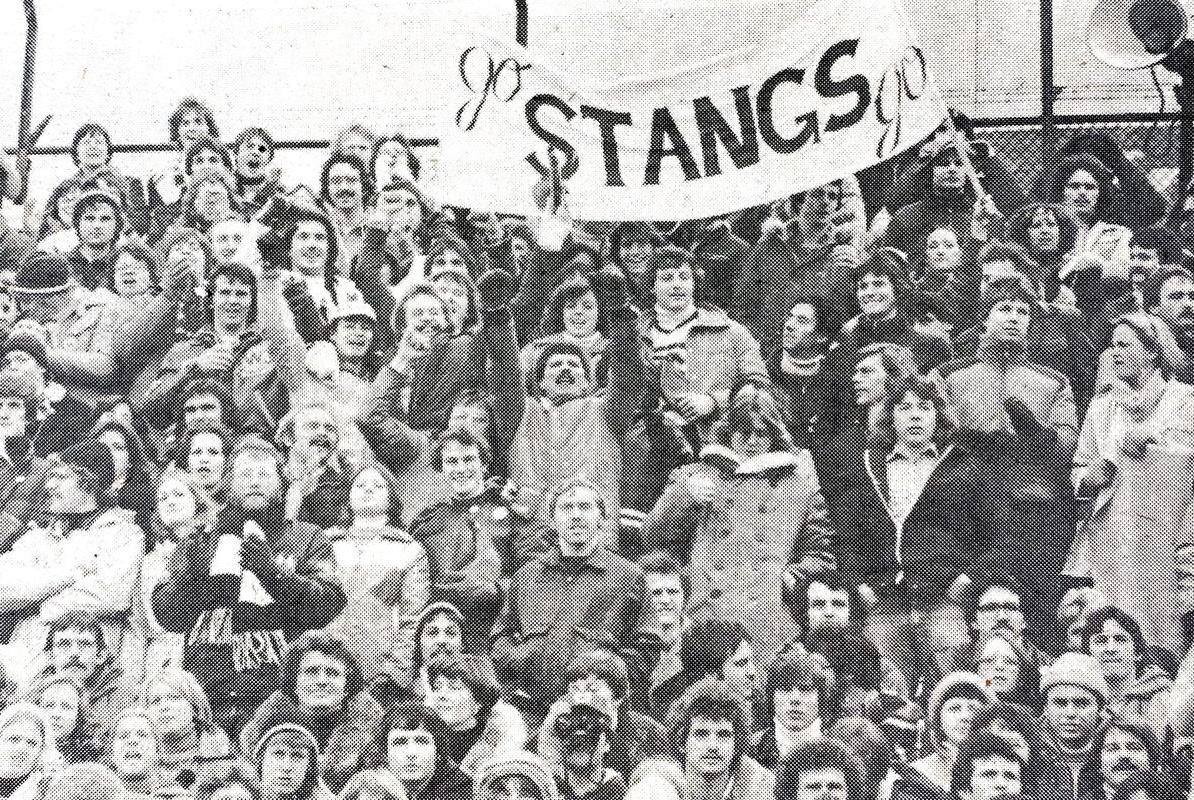
“It felt like the classic college experience,” he recalls.
Saturday afternoons in the fall were a big deal for Stephen and many other Western students of that era. J.W. Little Memorial Stadium — the home of Mustangs football from 1929 to 1999 and located where the Western University Student Recreation Centre parking lot now sits — was the place to be when the Mustangs were at home.
The 1970s were a golden era of football at Western. The goalposts weren’t torn down every week, but large crowds regularly filled J.W. Little or watched from the appropriately-named “Booze Hill” on the southwest corner of the stadium as the Mustangs won four Vanier Cups and five Yates Cups — the Ontario championship — in the decade. The camaraderie among the fans made the experience. They were loud, many were drunk and the games helped to intertwine student life and football. Drinking in the stands wasn’t legal, but was a big part of the game day experience.

“There was lots of booze in the stands,” Stephen says. “It was a party.
That, as much as the football, was the reason why people went.”
Stephen graduated from Western in 1982 after completing his undergraduate degree in English and masters degree in journalism. He didn’t miss many football games — he was an avid Mustangs fan and worked for both the Gazette and Radio Western when he was a student before starting his career as a sports journalist. He’s now known for his work with Sportsnet and the Globe and Mail.
Tom, meanwhile, commuted from his hometown of Exeter, Ont. as a student and wasn’t super involved in campus life. The 1977 Vanier Cup gave him the rare opportunity to see his classmates outside of the lecture hall. The atmosphere in the stands at Varsity Stadium that day was similar to that of J.W. Little on an average Saturday.
“A lot of people built their Saturdays around having some [drinks] prior to coming to the game, and they would do that as groups,” Tom says. “It was a social thing.”
If you went, you became part of a family.
Morris Dalla Costa, a retired journalist who worked for the London Free Press from 1984 to 2017 recalls the 1977 national championship being “pretty wacko.”
“It took us a full quarter to get in because they were searching everybody on the way in. Of course, it didn’t do any good because a whole bunch of people snuck all sorts of stuff in, so it didn’t really matter.”
Morris, who covered the Mustangs at the start and end of his tenure at the Free Press, says “that atmosphere will never be regained at the college football level.”
Ironically, while the Mustangs and their travelling fans celebrated their second straight Vanier Cup, football culture at Western was already on the decline. Western introduced the booze ban at the start of the 1977 season, preventing fans from bringing containers into the student side. The first game under the ban, against York, was played under what was described as a “somewhat sober gaze” by the Gazette.
Even though the mood was quieter, the Gazette reported attendance ini-
tially remained unchanged after the home opener.
“Thus far the ban would appear to have achieved its objective,” the article read.
But the drinking ban was the biggest change in Saturday afternoons at Western, according to Stephen. Most of the casual audience would soon be gone. Although attendance numbers weren’t available for each game, the Gazette later reported a decrease in student attendance by the end of the 1977 regular season compared to previous years.
In 1984, Western asked London Police to crack down on Booze Hill, which had flourished in popularity after the stadium’s booze ban was imposed. The university administration at the time was worried about the dangers of large, drunk crowds of students on the hill — similar to what instigated the drinking ban seven years earlier.
“The hill was never meant to act as a bleacher for football games and it was not designed to act as a drinking place,” university assistant vice-president of community relations Hugh Rooney told the Gazette at the time.
Just under two decades later, J.W. Little Memorial Stadium was closed for good.
With it went the memories, history and atmosphere of 70 years of Mustangs football. It was old, but it was built for the students. Fans sat close to the players and it allowed Western’s football atmosphere to thrive. Above all else people remember it as, it was a football stadium.
“J.W. Little was just a little shoebox,” Morris says. “It was a football stadium, it smelled like a football sta-
dium, it looked like a football stadium. When it rained, it was muddy. You were right on top of the players.”
Western Alumni Stadium was built as a multipurpose stadium, not solely for football, with a larger track around the field. As a result, fans are pushed further away from the action than they were at J.W. Little. Tom has been to games at Michigan Stadium in Ann Arbour, which regularly sees crowds of 100,000 at University of Michigan Wolverines football games, and feels that Michigan’s football-specific stadium makes a difference with fans being closer to the action.
Watching a game surrounded by empty bleachers doesn’t help.
Forty-five years later, as Mustangs running back Keon Edwards was tackled on a 54-yard run to end the first half, Tom stood up to stretch his legs. For the first time since the game began, he looked around the mostly empty stadium.
Western Alumni Stadium had a much calmer atmosphere than J.W. Little did on game days. While season ticket holders like Tom occupied the seats around the centre of the field on the west stand, the walk-up crowd filled out the sections near the end zones. The Mustangs only opened the east side for games with larger crowds — OWeek, Homecoming and the Vanier Cup in 2022. For the Yates Cup and Mitchell Bowl, the east stand would only be occupied by the broadcast cameras.
The quality of the football wasn’t the issue. By this point in the game, Western led 18–5. Quarterback Evan Hillock would finish the day with 299 passing yards, and Keon with 157 rushing yards as two of the nation’s best collegiate players.
“As a fan, you sort of feed off the energy of your fellow fans to flip the product on the field,” Tom says. “When there’s nobody on the other side, it’s not quite the same.”
MacKenzie, a 2023 Ivey Business School graduate, often spent his weekends at Western watching football — but not the Mustangs. Every Sunday, he would set his National Football League fantasy lineup in the morning and turn on NFL RedZone at 1 p.m.. He’d be glued to the screen until the end of Sunday Night Football. He was a football guy, a fan of the New England Patriots and Notre Dame Fighting Irish.
In his four years at Western, Tate only went to one Mustangs game, and it was during his first-year OWeek. He doesn’t remember much about the game, that it was against the rival Queen’s University Golden Gaels or that Western won 40–23. He does recall sitting on the uncomfortable metal bleachers, the unmotivated crowd and, more vividly, playing carnival games outside the stadium.
As a fan, you sort of feed off the energy of your fellow fans to flip the product on the field. When there’s nobody on the other side, it’s not quite the same.
“If you’re just thinking about the product on the field, you can really experience the same thing whether you’re in person or watching from home,” Tate says. “The difference is at home, you can do stuff during the commercial breaks, whereas in person you’re kind of stuck sitting there.”
Western — like most U Sports teams — is faced with the truth that football alone isn’t enough to motivate students to attend games anymore.
“Culturally, it’s no longer a thing to do here in London,” Morris says. “When it comes to the everyday Saturday games, people don’t show up.”
The rows of empty seats haven’t gone unnoticed by the local media.
“One can only hope that with the long lead time fans in the self-proclaimed, vainglorious, over-hyped great sports city of London can get off their pathetic butts and find a way to plant those butts in TD Stadium bleachers,” Morris wrote in the Free Press before a 2016 playoff game that drew 2,000 fans.
“Between [Summer Academic Orientation] and OWeek, it seems like our school spirit is spent by the time that football starts. But real school spirit, if you have any, should be put towards your fellow students, not residences and faculties. After all, if we can care this much about the Toronto Raptors, we should try to care more about the Mustangs too,” an article from the Gazette’s 2019 SAO issue read.
One possible explanation, according to Morris, is Western’s current student population. At a time when most Western students were from London or the surrounding area, football was ingrained in student life and something everyone watched on a weekly basis. As the university has expanded and diversified its student base, fewer students have family ties to the university and the football team. Students who have relationships, part-time jobs, a heavy course load or multiple extracurricular activities also have less free time.

“What does a Western Mustang football game offer a student?” asks Morris. “I couldn’t answer that.”
OUA football games are streamed online for free, but the lack of games available on television or subscription-based streaming platforms like Sportsnet NOW or DAZN may also be hurting the student fan base. According to Stephen, these little things have contributed to a cultural shift away from Canadian football in general, and that it is now akin to junior hockey where loyal supporters like Tom watch their home team, but few follow the sport on a macro level.
The reality is this: a present-day university student’s priority on a Saturday afternoon is no longer watching Canadian football on a backless metal bench for three hours. At least, not in its current state.
“You can’t treat it like a museum piece,” Stephen says. “It’s entertainment. It’s not a cultural obligation to go and watch the football. You have to compete with all of the other sports entertainment options that are out there.”
Onemonth after the Windsor game, as Western found themselves one step away from defending the Vanier Cup at home, a group of French-Canadians would descend upon Western Alumni Stadium. They would brave the -20 degree, windchilled air after a 10-hour drive from Québec City and were the loudest out of the 1,937 in attendance that day. They were fans of the only Canadian team to have averaged over 10,000 fans per game since 2010 — Laval’s Rouge et Or. In 2022, they would lead the country with an average home
crowd of 13,122.
As the 2022 Mitchell Bowl would show, Laval travels well. Their loyal home support is a reminder that Canadian university football can be a successful venture. Western’s football program, like Laval’s, has alumni support, funding and recent success — the Mustangs and the Rouge et Or have won two Vanier Cups apiece since 2017.
What sets Laval apart is the local culture surrounding their football team. In Québec, the Rouge et Or hold the same level of prestige as a professional sports team. It’s a different market than any other school in Canada. Alumni, students and locals regularly fill Stade Telus - Université Laval for home games.
“It’s very much about Québecois identity,” Stephen explains.
The Vanier Cup, hosted by Western in late November, would sell out in advance of kickoff. Tom insists that, like Laval, there is a market for football in this community. But today would not be the day football mania would return to southwestern Ontario.
Looking at Western’s two sellouts of 2022, one trend emerged as an incentive for students to come out to these games. At both games, Western created an event, complete with food trucks for students.
It’s a truth almost universally acknowledged that university students must be in want of free food. At last year’s OWeek game, students and orientation leaders were welcomed with a plethora of food options, including
a barbeque and rows of food trucks behind the east stand. At Homecoming, Western put on a fan festival with free food, entertainment and prizes. Excluding the Vanier Cup, which the Mustangs would not play in, none of the other games at Western Alumni Stadium would feature the same level of non-football activities available to students.
Moving Homecoming back to its original September date did help Western’s attendance. In 2016, the first year of “fake Homecoming,” Western’s real Homecoming game attendance dropped from over 10,000 to 3,876. In 2022, Western’s first home game on the original Homecoming since 2015 brought students and alumni together once again, with 10,125 in attendance.
Colin Gagnier, the Mustangs’ manager of fan & stakeholder engagement, takes an optimistic approach to Western’s football attendance, citing the sold-out crowds the Mustangs draw for OWeek and Homecoming and the organization’s commitment to providing the best fan experience in Canadian university sports.
“We know it is important that we continue to invest in our facilities and entertainment to fill the stands for our home games which is a big part of our Sports & Recreation Strategic Plan,” Colin wrote in a statement to the Gazette
U Sports declined to comment on attendance at regular season games, stating that “those games are property of the member universities and conferences.”
And while the Mustangs would blow out the Lancers 50–18 that October afternoon, one can only imagine the atmosphere if a sold-out crowd had turned up to cheer the team on. The players are proud to represent the university, but a return to the atmosphere that had historically defined football at Western would undoubtedly be fun for those both in the stands and on the field.
“I would encourage as many of my fellow students as possible to come out and watch our games and show your school spirit,” says quarterback Evan. “The more fans in the stands, the more enjoyable the experience for both the fans and players.”
Tomis a part of a loyal group of season ticket holders who will always keep coming to the games. He hopes that one day, students will once again fill Western Alumni Stadium on a regular basis. But whether they come or don’t, you’ll find him in his seat in row P of section C at every game. The empty seats in the background were just that to Tom during play. After all, he was there for football.
He always has been, and he always will be.
As Tom sat back down for the beginning of the third quarter, his eyes shifted back to the game, where running back Keanu Yazbeck caught the kickoff, ran up the field and was tackled on the 40-yard line. Like Keanu and the rest of the players on the field, Tom’s only focus was on the next play.






